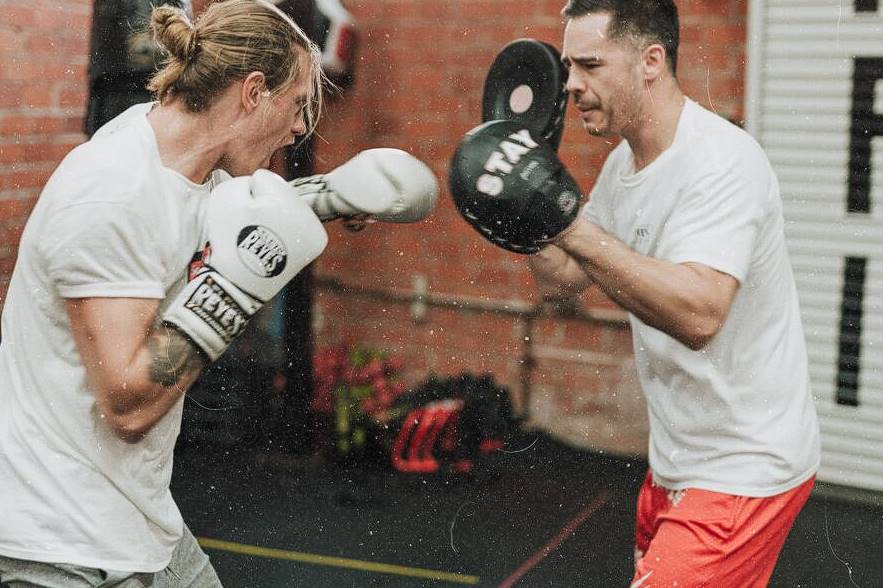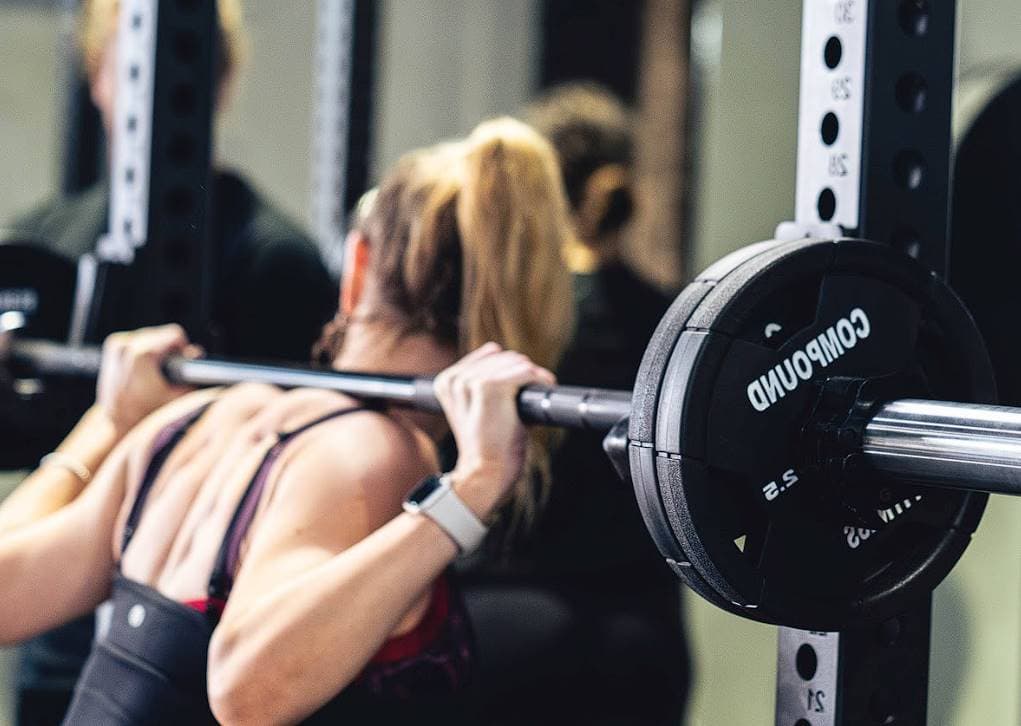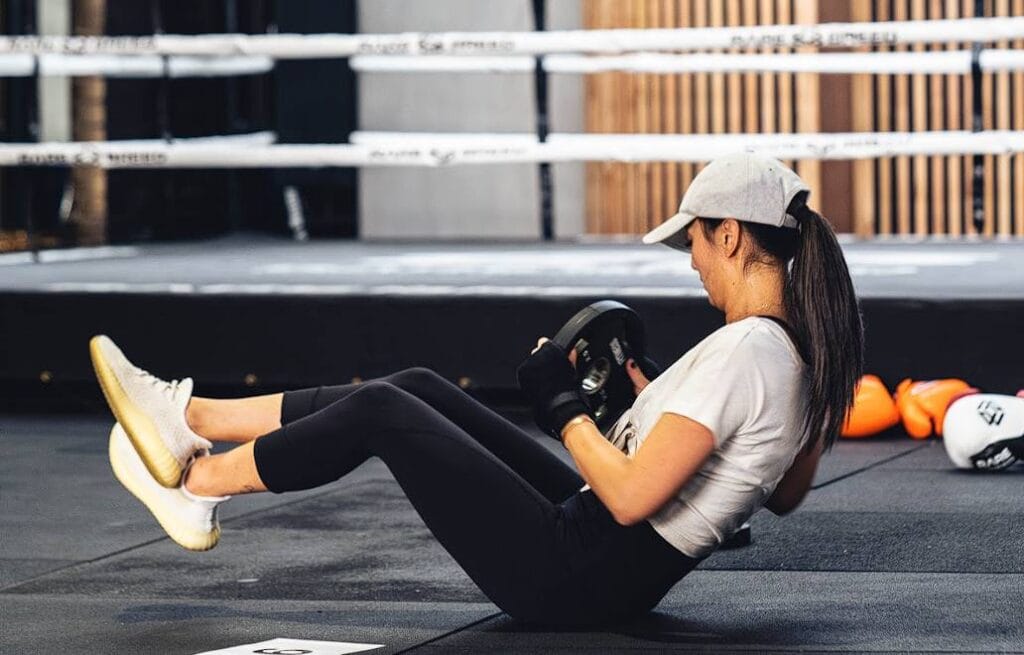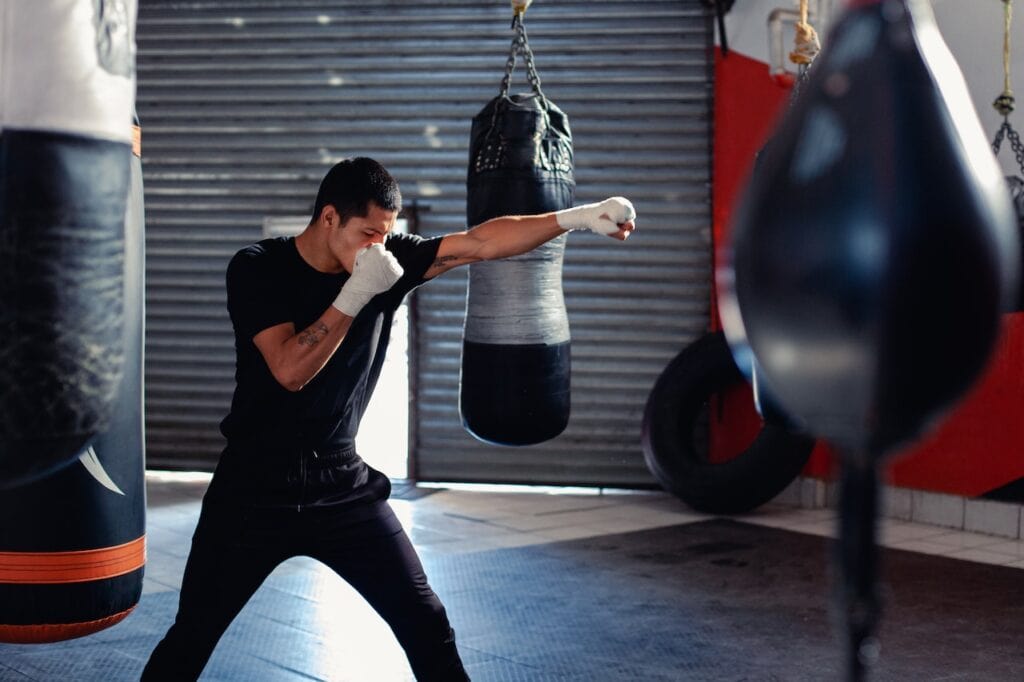Boxing is a sport that requires a variety of physical abilities, including speed, power, strength, and endurance. It also depends on the weight classification. However, bulk can sometimes be an advantage.
Weight training, also known as resistance training, can be an effective way to foster and improve these aspects of athleticism when it is handled appropriately. However, because every athlete has unique requirements, a generic program such as the one presented on this page will need to be adapted to accommodate certain playing styles, ages, and objectives, as well as the facilities that are accessible.
If you want to put on more muscle, you need to lift heavier weights more frequently, up the intensity of your workouts, and consume more protein.
Weight training is unnecessary for boxers because it is related to growing muscle, increasing body weight, and lowering flexibility. Therefore, and lowering flexibility. Olympic lifters demonstrate that it is not the case. An issue could arise from having too much muscle or needing more flexibility training.
As long as you perform it the right way, it is also an excellent technique to develop your speed, power, and strength as part of your overall boxing training and fitness, which is why it is so popular. Instead of focusing on expanding their muscle bulk, boxers should work on improving their functional strength.
A General Weight Training Program for Boxing
General Preparation
The general preparation phase 2 is intended to give comprehensive muscle and strength conditioning. If you are seasonally preparing for the upcoming season, you should complete this phase at the beginning of the preseason. If you do not have "seasons," then move through the various training phases in the order they are presented.
Do not perform the workouts before engaging in a session of fight training. It is a general rule that applies to all of the following programs.
Three, if feasible, you should perform these tasks much later in the day, after you have finished your ring work, earlier in the day, or entirely on a different day. Ring labour requires you to be in good physical condition. Nothing you do should prevent you from practising your technical boxing skills in the atmosphere where you would typically compete. It includes anything and everything.
Frequency: two to three times a week for a period of eight to ten weeks
Classification: air conditioning, in general
The basic strength and muscle program includes the following exercise regimen: three sets of ten to twelve repetitions, plus a warm-up and a cool-down.
- Squat (or leg press) (or leg press)
- Press on the bench (or chest press)
- Romanian deadlift
- Crunch
- Rowing motion when seated on a cable
- A pushdown with the triceps
- Pulldown on the lats
- Presses a la tête
- Biceps curl
Rest between sets: 30-90 seconds
Specific Preparation
During this phase, you will concentrate on developing the abilities that are necessary for you to be successful in the ring.
Strength and Power
Frequency: two to three sessions each week for a period of four to six weeks
Power and robustness are the types
Five sets of 6 repetitions for each exercise
- Bench press with an inclined bar Romanian deadlift4
- Clean power hanging position
- Pull-ups\sSquats
- Three sets of 10 to 12 combined crunches are to be performed.
Rest between sets: 3-5 minutes (crunches: 1-2 minutes)
Speed and Agility
Frequency: two to three sessions each week for a period of four to six weeks
The type: quickness and dexterity
Perform five sets of each exercise for thirty seconds to achieve maximum repetitions
- Broad jumps
- Agility ladder
- lateral jumps performed with one leg only (30 seconds per leg)
- Box leaps
Rest between sets: 1-2 minutes
Competition Phase
Upholding one's strength and might throughout this phase is the mission. The emphasis should be placed on ring training and competition. At the end of Specific Preparation, take a break from lifting heavy weights for seven to ten days before the start of the competition.
During this time, you should continue to train in the ring. In the competitive phase of your training, your weight training should mostly serve a maintenance role.
1–2 sessions per week are the recommended frequency
Power: less weight and a more rapid execution compared to the specific preparatory phase
Exercises: three sets of ten repetitions, quick concentric action, and 40% to 60% of one's one-repetition maximum
- Squats
- Hang clean
- Romanian deadlifts
- Crunch Squats
Rest between sets: 1-2 minutes
Aerobic Conditioning
Boxing is a sport that requires stamina and aerobic fitness to complete the full 12 rounds. The majority of boxers use running to maintain this level of fitness. Therefore, a consistent "roadwork" run is an essential component of training for building aerobic fitness and endurance, particularly for those competing in bouts that last 12 rounds.
The recommended weekly frequency for distance runs is four or five times per week, with each run covering a distance between six and eight kilometres at a comfortable pace. A training session that is too long should be avoided to reduce the amount of muscle loss and the proportion of converted slowly to fast fibres. Aerobic conditioning can also be achieved through circuit training in the gym.
Weight Training for Boxing
Weight training will make the fighter slower. It was a common misconception. However, using sound principles of strength training—specifically, increasing one's muscle mass—can result in gains in both velocity and power.
Weight training can cause your muscles to become rigid, making them more susceptible to exhaustion. However, because a good weight training program will build muscular endurance, the athlete will be less likely to experience muscle tiredness due to exercise.
Boxers who lift weights regularly will experience a reduction in their flexibility. However, the proper execution of a weightlifting program will result in an increased range of motion and enhanced flexibility.
It is a well-established fact that boxers participating in weight training can improve their speed, strength, and overall level of competition during fights. As a result, weight training is essential to practically all major sports.
What benefits can be obtained through weightlifting? A strong opponent is dangerous because they are stronger, faster, and can hit harder than their competition. Weight training helps build stronger, faster, and harder-hitting athletes.
Through weight training, boxers can reduce their risk of injury by strengthening their muscles, bones, and ligaments. Boxing is a contact sport. Strength training has also been shown to boost both explosive power and anaerobic endurance.
Lifting low weights will lead to modest improvements in aerobic capacity. However, this exercise will only do a little to boost explosive power or speed. The boxer must complete lifts ranging from moderate to heavy weight while simultaneously executing ballistic movements. Recommendations A weight training plan should be carried out twice weekly.
Exercising more than three times per week will be difficult to meet the sport-specific training requirements, such as pad work and sparring. The optimal time to lift weights is after you have finished your boxing-specific training; you should only do it after sparring. At the very least, you need to give up your regular weightlifting routine one week before the tournament.
How to get in shape: boxers should execute their strength training with weights between 60 and 85 per cent of their full capacity. For instance, if you can execute one repetition of bench pressing with 50 kilograms, you should perform your strength training with weights ranging from 30 to 35 kilograms. The repetition ranges you use should change depending on the precise aims you want to achieve.
When training power/maximum strength, lower rep ranges of 4–6 (with larger loads) are optimal, whereas when training speed strength, rep ranges in the middle of the spectrum (with moderate weights) are optimal.
When the objective is to condition the body as a whole, it is possible to achieve this by performing particular full-body motions, such as dumbbell swings or snatches, with greater repetitions.
When you lift the weights, make sure to move them explosively to maximise your workout. In addition, you need to train appropriately if you want to enhance your speed and power. For instance, you should lift the weight with all your might when executing the bench press.
Train quickly to become quickly. Regarding strength training, the goals of a boxer and a bodybuilder are extremely different. A fighter trains for function, constantly tracking his body weight throughout the process.
It will help if you improve your strength while staying within the parameters of the weight division you are competing in. Your efforts should be concentrated on the primary muscle groups that will serve you well inside the ring.
Sample Routine
- Snatches with a dumbbell - three sets of six reps for each arm
- Three sets of 8 repetitions on the bench press
- Two sets of clean jerks with a dumbbell 3 x 8
- Dumbbell lunges 3 x 6 per leg
- Pull-ups with weight — 4 sets of 6 reps
- Press on the bench with a close grip 3 x 8
This regimen works every muscle in your body, but it's just one of several options available to you. When it comes to training, variety is always quite crucial. To stimulate continuous improvement, you must continually challenge the muscles in various ways, from various angles, and with various exercises.

Boxing Weight Training That Works
The development of functional muscle is the primary goal of the ideal form of weight training for boxing. The kind of muscle that is lean and devoid of fat while at the same time being EXTREMELY POWERFUL despite its appearance.
CrossFit and plyometric training are the two forms of strength training that come highly recommended by me for boxing. Let's delve deeper into both forms of training to have a better understanding of how boxing might benefit from either one.
CrossFit
Functional exercises that are the "core movements of life" are incorporated into CrossFit, a style of high-intensity training continually modifies and integrates these exercises.
CrossFit is designed to accommodate individuals of varying fitness levels through scalable workouts that combine various forms of cardio training, such as running, jumping, and cycling, with Olympic and powerlifting routines.
Move the largest weights to the longest distances, which is why CrossFit exercises are perfect for increasing the amount of work done in the shortest amount of time possible. Results cannot be achieved without intensity, measured as labour accomplished in a certain amount of time (or power expended). The greater the amount of labour completed in a shorter time or the greater the force produced, the more strenuous the effort.
CrossFit routines constantly feature varied training performed at, for example, professional intensity, leading to a significant gain in overall fitness and a body that is both agile and powerful.
It has been demonstrated through experimentation that it is effective when combined with boxing. After suffering a defeat at the hands of Floyd Mayweather, professional boxer Robert Guerrero decided to increase his strength in the ring by engaging in CrossFit training. The results were astonishing.
Plyometric Training
Jump training is another name for what is now known as plyometric training. The workouts include:
- Aggressively pushing off surfaces.
- Jumping over cones or onto other platforms such as boxes or benches.
- Jumping again after landing.
Jumping exercises involving explosive movement help create quick and reactive muscles and improve your agility and balance. The resistance comes from your body weight, but if you want to make the workouts more challenging, try holding weights instead.
Because the exercises are carried out rapidly, and the work rate is maintained at a high level, you will also engage in a cardiovascular exercise.
Plyometric exercises are beneficial for athletes of all different types of sports and should be incorporated into their training routines. For example, boxing is another sport that might benefit from the explosiveness gained by plyometric training.
Plyometric training provides fighters with full-body conditioning that improves their stamina and endurance and helps them create lean muscle.
Weight Training for Boxing – What You Need to Know
Lifting heavy weights causes microscopic breaks in the muscle fibres, and the protein you consume in your diet supplies the building blocks necessary for repairing and growing those muscles so that they are larger and more powerful than before. In a nutshell, that is what bodybuilding is all about, ladies and gentlemen.
If you want to put on more muscle, you need to lift heavier weights more frequently, up the intensity of your workouts, and consume more protein.
Weight training is unnecessary for boxers because it is related to growing muscle, increasing body weight, and lowering flexibility. Therefore, boxers can skip weight training. On the other hand, as demonstrated by Olympic lifters, this is not the case. An issue could arise from either having too much muscle or not enough flexibility training.
As long as you perform it the right way, it is also an excellent technique to develop your speed, power, and strength as part of your overall boxing training and fitness, which is why it is so popular. Instead of focusing on expanding their muscle bulk, boxers should work on improving their functional strength.
Boxing places a significant demand on the body, requiring it to maintain a high level of speed, strength, and endurance. This degree of physical preparation can only be attained via the proper kind of training. It is possible to improve your performance in all aspects of boxing by adding weight training to your normal conditioning routine.
There are a lot of non-boxers working as strength and conditioning coaches in the sport of boxing these days. Some of them try to stake their claim to fame on the fact that they have trained successful boxers, but those fighters were successful even before they trained them, so they are merely riding on the success of their students.
In boxing, strength training can be challenging since it requires growing strength without sacrificing speed, mobility, or endurance. Therefore, it can be a difficult balance to achieve.
Weight Training for Boxing - a Closer Look
When it comes to the sport of boxing, also known as "the sweet science," there has always been a subject that has been contentious among boxers: weightlifting. To be more specific, many sports followers and boxers ask whether increasing weights will result in an improved boxer.
Weight training will make the boxer slower. However, science has demonstrated that the right weight training program may boost speed and power.
Weight training can cause your muscles to become rigid, making them more susceptible to exhaustion. However, because a good weight training program will build muscular endurance, the athlete will be less likely to experience muscle tiredness due to exercise.
Boxers who lift weights regularly will experience a reduction in their flexibility. The proper execution of a weight training program will result in an expanded range of motion and improved flexibility.
It is a well-established fact that boxers participating in weight training can improve their speed, strength, and overall level of competition during fights. Weight training is now an essential component of practically all major sports.
It is a well-established fact that boxers participating in weight training can improve their speed, strength, and overall level of competition during fights. Weight training is now an essential component of practically all major sports. Lifting weights can do. Lifting weights helps athletes become more powerful, allowing them to run faster and punch harder. A strong opponent is a hazardous opponent.
Through weight training, boxers can reduce their risk of injury by strengthening their muscles, bones, and ligaments. Boxing is a contact sport. Strength training has also been shown to boost both explosive power and anaerobic endurance.
It is essential to remember that even though this is true for the vast majority of different types of weight training, certain exercises can assist you in improving your performance inside the ring.
Unfortunately, most people interested in boxing engage in bodybuilding-style routines, which make them bigger but do not assist them in developing functional strength that they can bring into the ring with them. It is a problem.
In other words, lifting weights is an option, but to experience the positive effects of the activity, you need to have some expertise. Therefore, you should steer clear of any lifts or routines designed for bodybuilding and instead focus on exercises that will help you develop explosive power that you can use in the ring.
Is Weight Lifting Training Good or Bsd for Boxers?
There is no doubt that boxers may benefit from training that involves lifting weights.
It is because it can increase your power, strength, speed, and muscle regardless of whichever weight group you now fall into. In addition, boxers need to perform movements related to boxing as often as they can so that they can transfer the motions they learn from weight training to technical boxing workouts, sparring, or competition in the ring. Therefore, it is crucial to conduct boxing-specific movements as often as possible.
Why Should You Weight Train for Boxing?
You must ensure that you are fully hydrated before beginning your routine, drink water while performing your routine, and finish a proper warm-up at least 15 minutes before beginning your routine. In addition to being incorporated before and after your weight training regimen, shadowboxing is also a great option.
The following is a rundown of the benefits that you may anticipate from participating in a customised weight training program:
Improved endurance
Working out with weights will help you become stronger and enhance your endurance or stamina, which is perfect for your general health and fitness. Said, you may force your body to work harder for a longer period by maintaining a consistent level of performance.
It is beneficial not just in day-to-day life but also in the ring, where it is necessary to maintain strength for several rounds. Increased endurance can also lessen the likelihood of an accident and muscle strain or fatigue.
Improved speed-strength
Boxers who lift weights see improvements in their speed and strength due to their workouts. It can be accomplished by moving moderate weights at high speeds, mimicking the motion of punching an opponent. The weight should be whatever is comfortable for you.
If you do this during your training, when you compete without weights, you will be able to hit more quickly and effectively before your opponent can hit first.
Practice without weights, with weights, and without to see the difference in speed between the three states. Over time, you can increase the resistance by using bigger weights.
Maximal and explosive strength
Weightlifting is a great way for boxers to boost their max strength. Your maximum strength is the amount of force that you are capable of applying at any one moment. You can get better at lifting large weights and making motions that match the number of reps you do.
On the other hand, this power can increase explosive strength. Because of this, explosive strength can produce the highest force in the shortest time. When you are facing up against an opponent that is on a similar level to you, and every move counts, the additional speed you possess is essential.

How to Train Like a Fighter: Weight Training
Weight Training
Weight Training Tips:
- Everything is done at maximum speed while maintaining complete command of the load lifted, pressed, or pulled. Formality should come first. After that, and only after that, should you focus your efforts on exploding with the weight?
It is especially true for the portion of each exercise referred to as the concentric contraction. During this portion of the workout, you always move at your maximum speed (press in a bench press, pull in a chin-up, lift in a deadlift).
- Put in an honest day's work! It is not the activities themselves but how they are performed that sets the finest fighters apart from the rest. To answer your question, they approach things differently regarding selecting exercises and the number of reps they employ. However, the work ethic is where a fighter truly differentiates themselves from others.
Act as if each set is the only one remaining in the workout when you perform it. Don't try to "pace yourself" for a strong finish. Just go all out.
Set Descriptions:
- Superset. Carry out each movement immediately after the other, save the rest interval at the very end of the set. Repeat for the number of sets that are displayed.
- Giant Set. Carry out each of the three exercises in rapid succession, saving your rest until the very end of the set. Repeat for the number of sets that are displayed.
- Quad Set. Carry out each of the four moves immediately after the previous one, saving your rest for the end of the set. Repeat for the number of sets that are displayed.
What are the Pros & Cons of Weightlifting for Boxing
Pros
- It will increase your capacity for explosive action
- You can find that certain exercises provide you with a significant boost in terms of pulling your punches back more quickly
- A helpful method for treating injuries that keep coming back
- An excellent method for strengthening the abdominal muscles and making them more resistant to punches
Cons
- In the ring, it may cause you to become more cumbersome, slower, and tired.
- When you spend more time lifting weights, you spend less time boxing and working on your skills.
- When done incorrectly, there is an increased chance of injury.
Only when weightlifting is done correctly with the appropriate workouts will the benefits listed above be realised. Isolation lifts, such as tricep pushdowns and bicep curls, should be avoided by boxers as much as possible because of the tendency of these exercises to be employed primarily for the goal of bulking up and also because these exercises make the muscles that they target more rigid.
In addition, the movement cannot be replicated in the boxing ring.
Weight Training for a Boxer – Strength Training vs Bodybuilding
Strength training and bodybuilding are very different animals; comparing the two is like comparing apples and oranges. The sports of strength training and bodybuilding couldn't be more different.
The common belief is that lifting weights will increase one's size and the number of muscle groups one possesses. When it comes to bodybuilding, however, several experienced fitness instructors are concerned that greater muscles will compromise overall endurance and speed.
After all, having a greater body mass results in increased oxygenation and circulation of the blood. To make matters worse, if you don't have the right body type or weight distribution, you'll be gasping for air by the middle of the second round.
Bodybuilding is something other than what boxers should start doing under any circumstances. These exercises are designed solely for aesthetic purposes, and the outcomes are determined by a panel of judges who look at the participants' muscle groups.
On the other hand, the weight training of a boxer will emphasise explosive movement and functional application. In addition, you should concentrate on perfecting your form and technique before you worry about your explosiveness.
Summary
Weightlifting or some other sort of strength training should be a part of a boxer's routine; nevertheless, how they should perform this training differs from that of bodybuilders and powerlifters.
There are several similarities between boxing and the strength and cardiovascular conditioning involved in CrossFit and plyometric training. First, your stamina, strength, endurance, and speed will all improve as a result of training in either of these disciplines, which is beneficial because boxing requires all of these qualities.
Boxing can also be incorporated into the workout by aligning the duration of the exercises and the rest intervals with the rounds of boxing or by interspersing the exercises with rounds on the heavy bag.
Whether you decide to lift weights or not, you should always prioritise training that can help you in the ring. But, again, it is true regardless of whether or not you lift weights.
Don't be concerned about how you appear in the mirror or how much you weigh. If you are truly dedicated to boxing, the only thing that should bother you is how well you perform.
- Always remember to warm up before beginning to refrain from training.
- Do not continue to train if you are suffering from a significant injury, whether acute or chronic.
- Unless you are actively treating or healing from an ailment that requires weight work, you shouldn't skip a session in the ring in favour of lifting weights.
- If you have access to a knowledgeable coach, follow their directions for your program's specifics.
- After a strenuous season of training and competition, you should reward yourself by giving yourself at least a few weeks off at the end of the season.
- Before lifting weights, it is important to familiarise yourself with the basics by reading.
Frequenly Asked Questions
How often should boxers incorporate weight training into their routine?
The frequency of weight training sessions depends on several factors such as the boxer's training phase, experience level, and overall workload. Generally, boxers can benefit from weight training 2 to 3 times per week. It's important to allow adequate rest and recovery between sessions to prevent overtraining and optimize performance.
Should boxers focus more on high-repetition or heavy-weight lifting?
Boxers should incorporate a combination of high-repetition and heavy-weight lifting in their training programs. High-repetition exercises (e.g., 12-15 reps) with lighter weights can help develop muscular endurance. On the other hand, heavy-weight exercises (e.g., 4-6 reps) with proper form and technique can build maximum strength and power. A balanced approach that targets both aspects is recommended.
How should boxers structure their weight training sessions?
Boxers should structure their weight training sessions based on their overall training goals and periodization. A typical session may include a warm-up, followed by compound exercises targeting major muscle groups, plyometric exercises for explosive power, core exercises for stability, and specific upper-body exercises for punching power. It's important to maintain proper form, gradually increase the intensity, and include rest intervals to optimize results.
How can weight training help prevent injuries in boxing?
Weight training plays a vital role in injury prevention for boxers. It strengthens muscles, tendons, and ligaments, improving overall stability and reducing the risk of strains or tears. It also enhances bone density, making boxers less susceptible to fractures. Additionally, weight training can address muscle imbalances and improve posture, reducing the likelihood of overuse injuries.
Is it necessary for female boxers to engage in weight training?
Yes, weight training is beneficial for female boxers just as it is for male boxers. It can help female boxers build strength, power, and endurance, which are crucial for their performance. Contrary to common misconceptions, weight training will not lead to a bulky physique in women. Instead, it enhances lean muscle development and overall athletic performance.



















